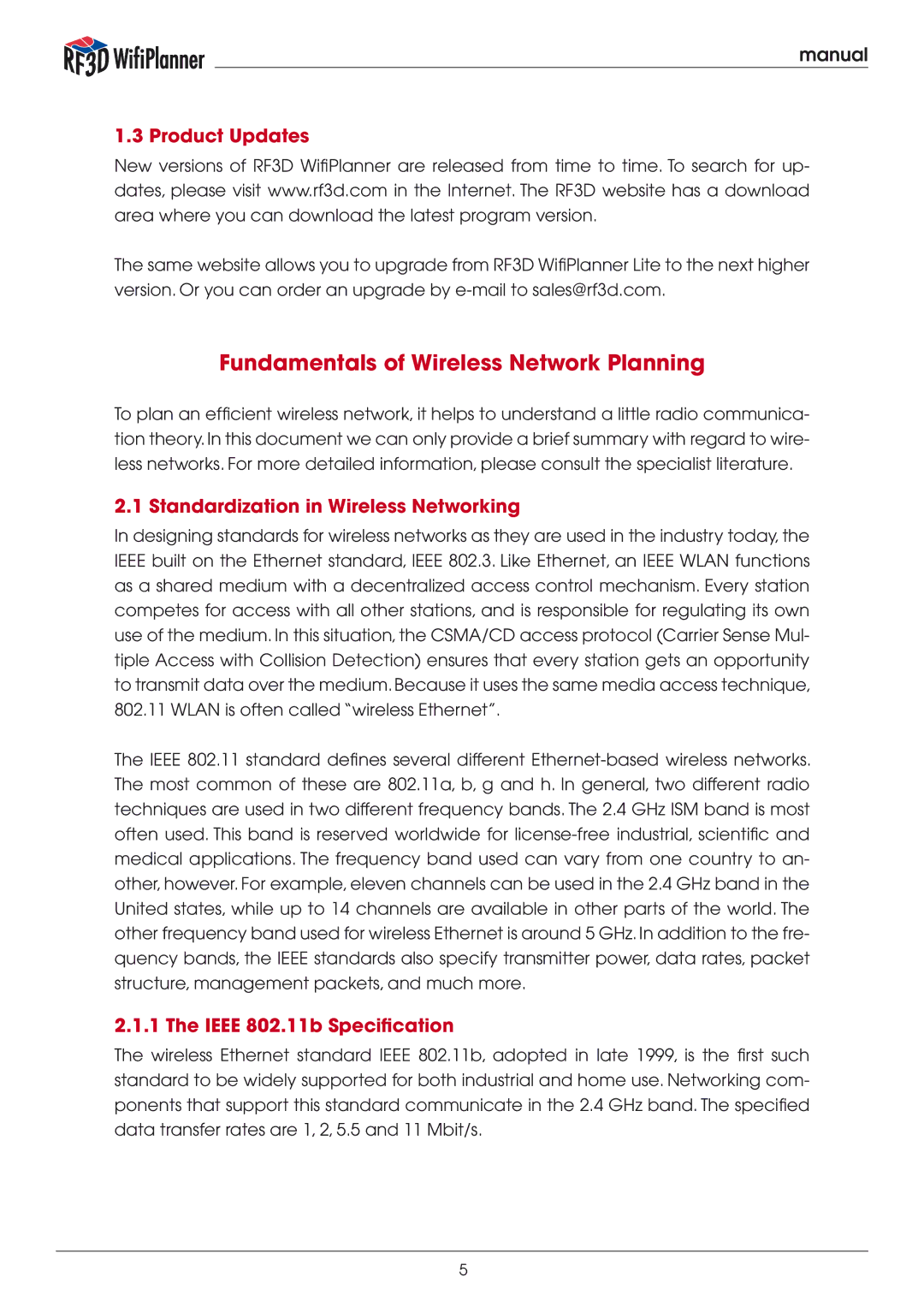
manual
1.3 Product Updates
New versions of RF3D WifiPlanner are released from time to time. To search for up- dates, please visit www.rf3d.com in the Internet. The RF3D website has a download area where you can download the latest program version.
The same website allows you to upgrade from RF3D WifiPlanner Lite to the next higher version. Or you can order an upgrade by
Fundamentals of Wireless Network Planning
To plan an efficient wireless network, it helps to understand a little radio communica- tion theory. In this document we can only provide a brief summary with regard to wire- less networks. For more detailed information, please consult the specialist literature.
2.1 Standardization in Wireless Networking
In designing standards for wireless networks as they are used in the industry today, the IEEE built on the Ethernet standard, IEEE 802.3. Like Ethernet, an IEEE WLAN functions as a shared medium with a decentralized access control mechanism. Every station competes for access with all other stations, and is responsible for regulating its own use of the medium. In this situation, the CSMA/CD access protocol (Carrier Sense Mul- tiple Access with Collision Detection) ensures that every station gets an opportunity to transmit data over the medium. Because it uses the same media access technique, 802.11 WLAN is often called “wireless Ethernet”.
The IEEE 802.11 standard defines several different
2.1.1 The IEEE 802.11b Specification
The wireless Ethernet standard IEEE 802.11b, adopted in late 1999, is the first such standard to be widely supported for both industrial and home use. Networking com- ponents that support this standard communicate in the 2.4 GHz band. The specified data transfer rates are 1, 2, 5.5 and 11 Mbit/s.
5
